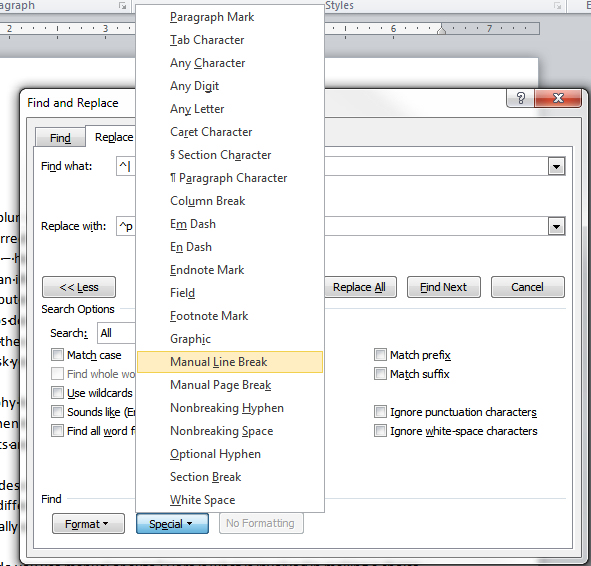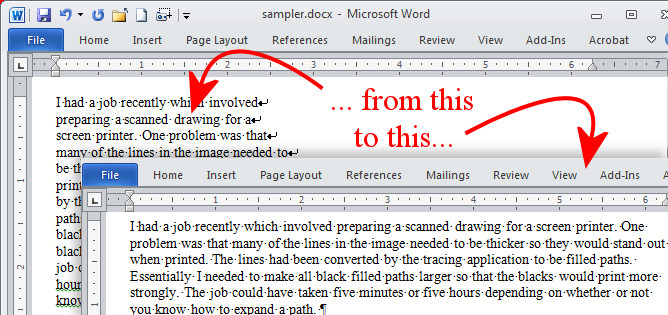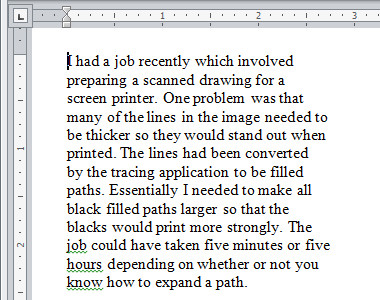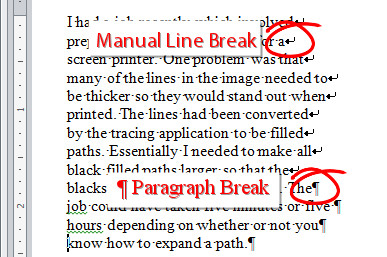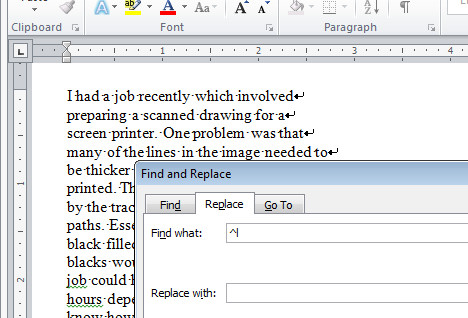I recently grabbed some text from an email that I’d sent to someone. The text was in numbered point form and I wanted to add some more items inside the list of points. This is where everything started to go hair-raisingly wrong.
It seemed as if my list was no longer reformatting correctly and the numbers were everywhere. Worse still, that old standby of copying and pasting formats using the FormatPainter didn’t fix the problem.
By selecting the Show/Hide¶ icon on the Home tab in Word I immediately saw the problem. Instead of paragraph marks at the end of each paragraph there were bent arrows indicating a manual line break. I didn’t put them there but the email software had.
To get my list back to something that I could work with, I needed to quickly replace the manual line breaks with paragraph breaks.
If you open the Find and Replace dialog and click in the Find What: box you immediately see the problem – how do I tell it what a manual line break is and what a paragraph break is? The solution is to click the More button to show more options. Then click Special to get access to the Manual Line Break character. It’s actually a carat and what looks like a pipe symbol but it’s easiest to get this by clicking this by clicking Manual Line Break because the pipe symbol on the keyboard isn’t the right one – go figure!
Then click in the Replace With box and select the Paragraph Mark – this one you can type manually as it is carat + p (^p) but since you’re there why not click to insert it instead. Now click Less to return the dialog to what it looked like before and click Replace All to turn all the manual line breaks back to regular paragraph marks. Now my numbering worked just fine.


